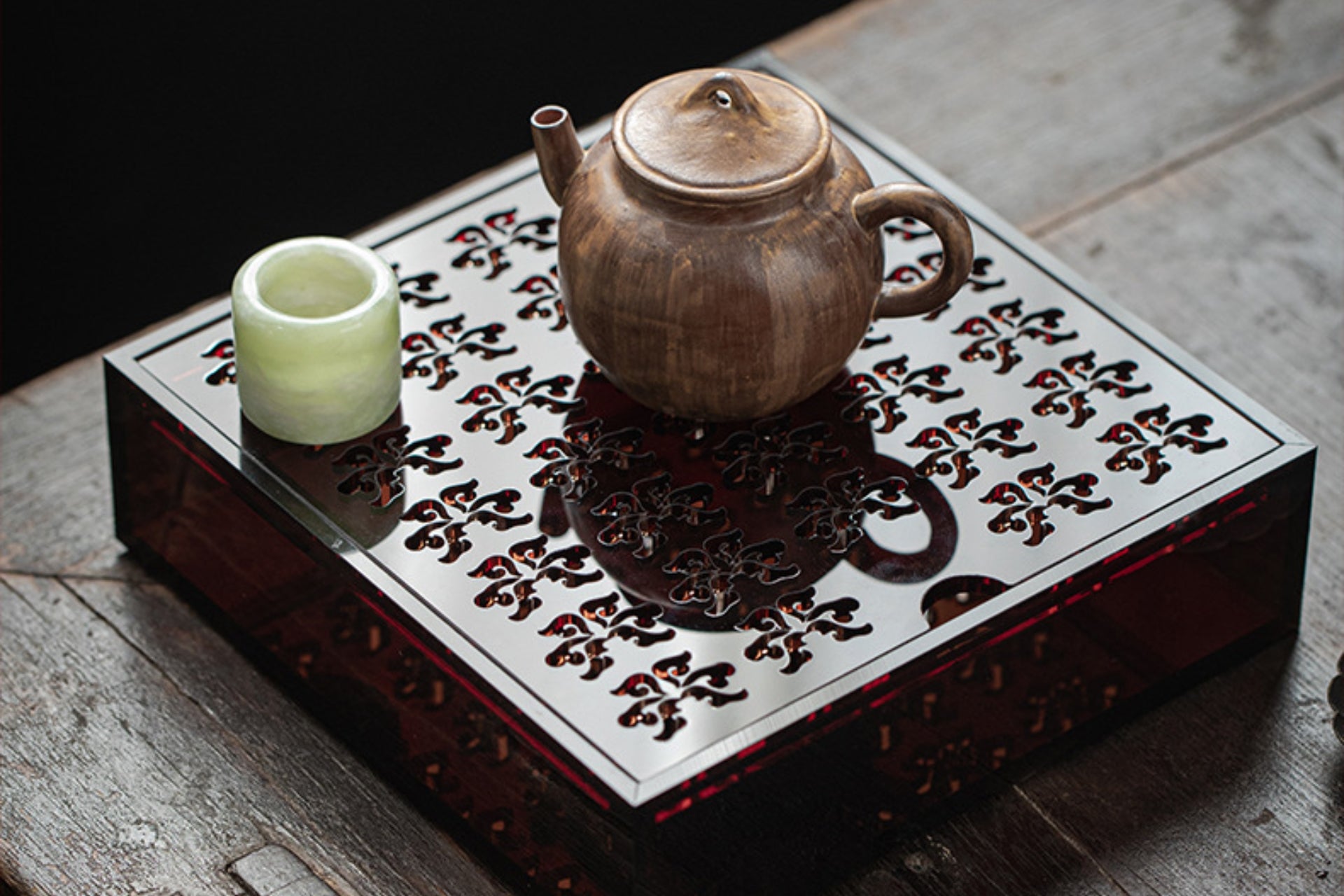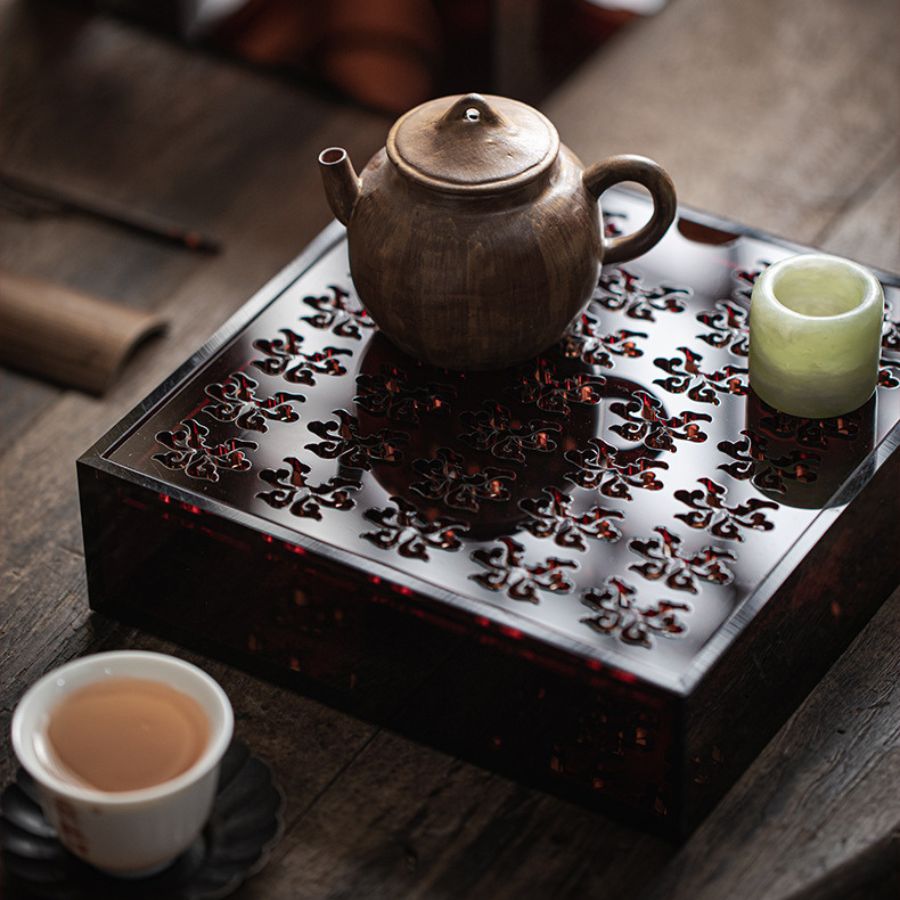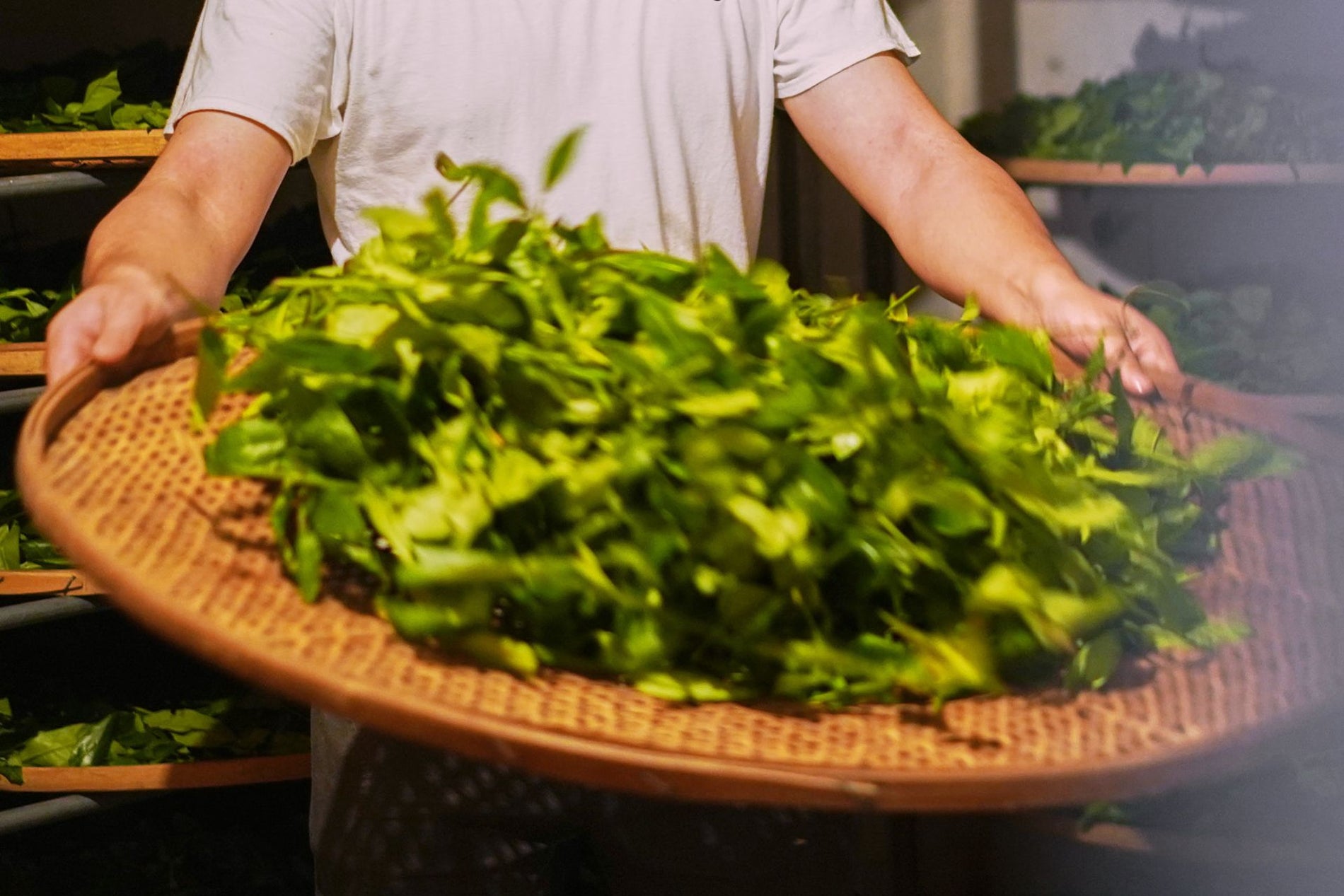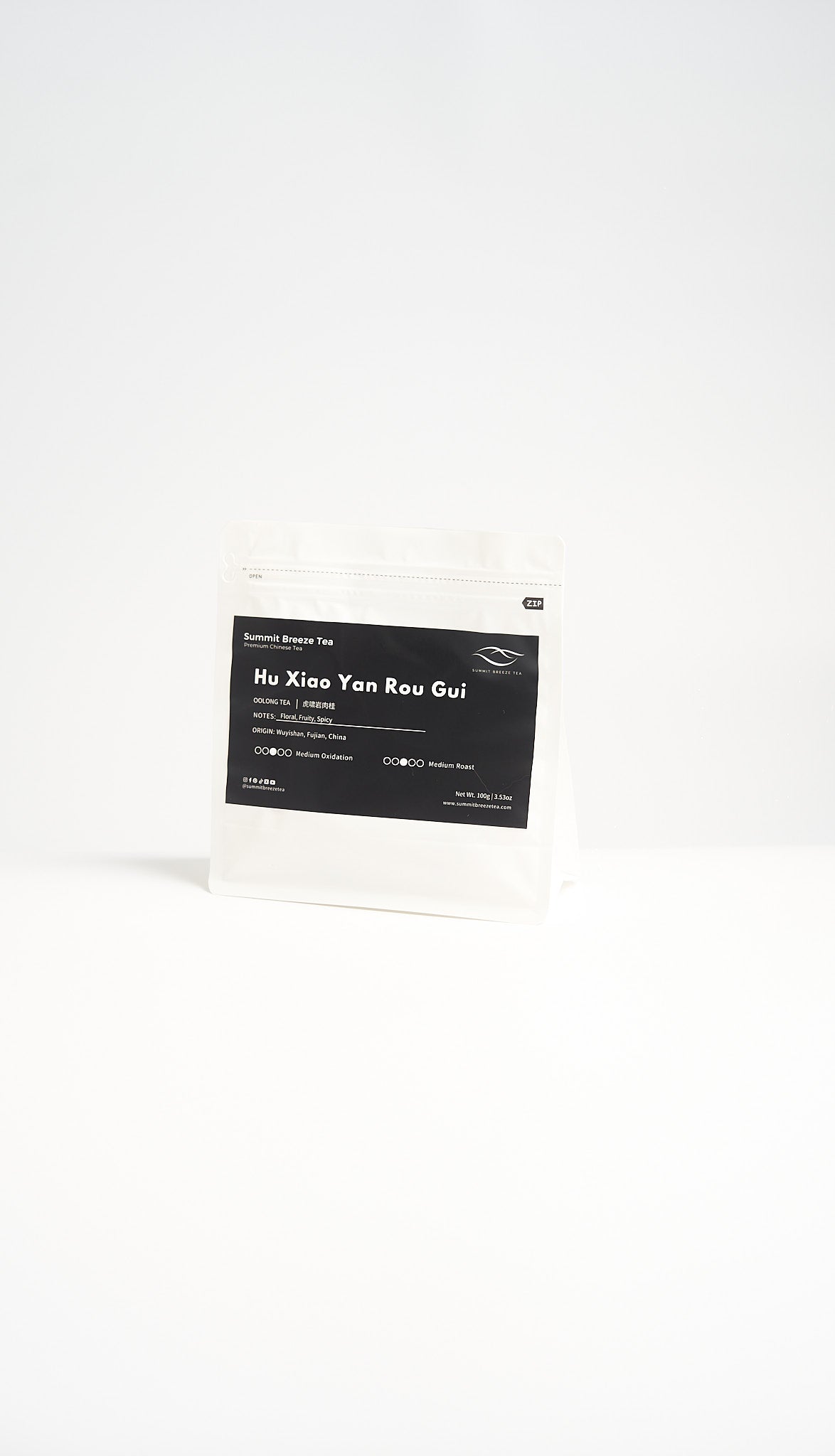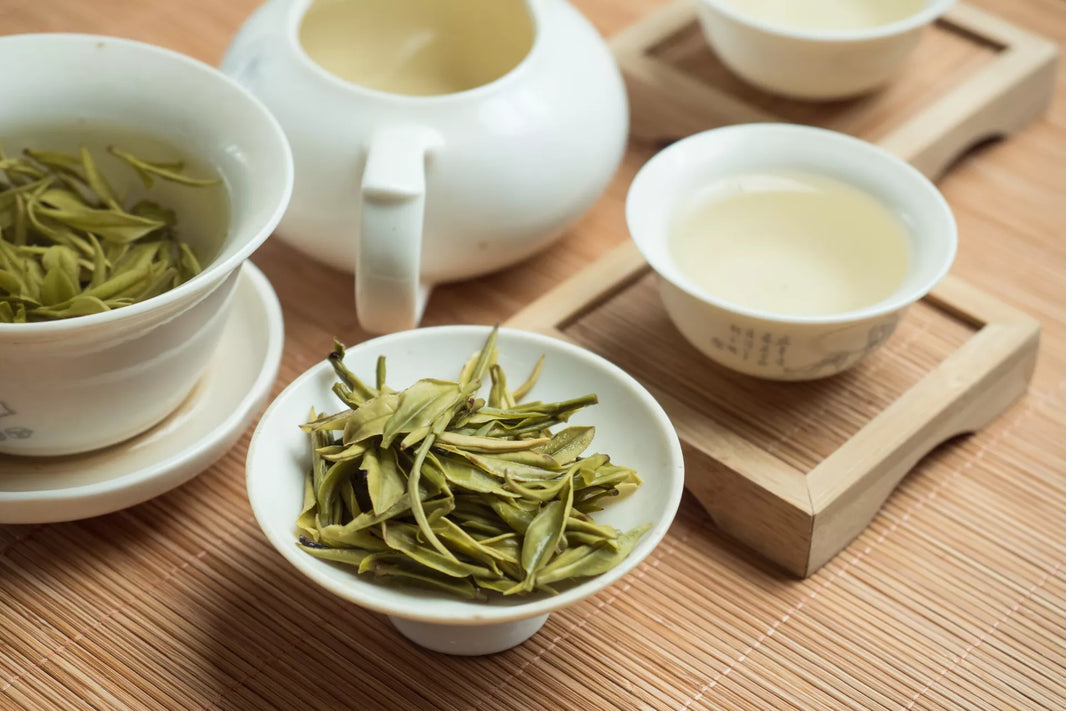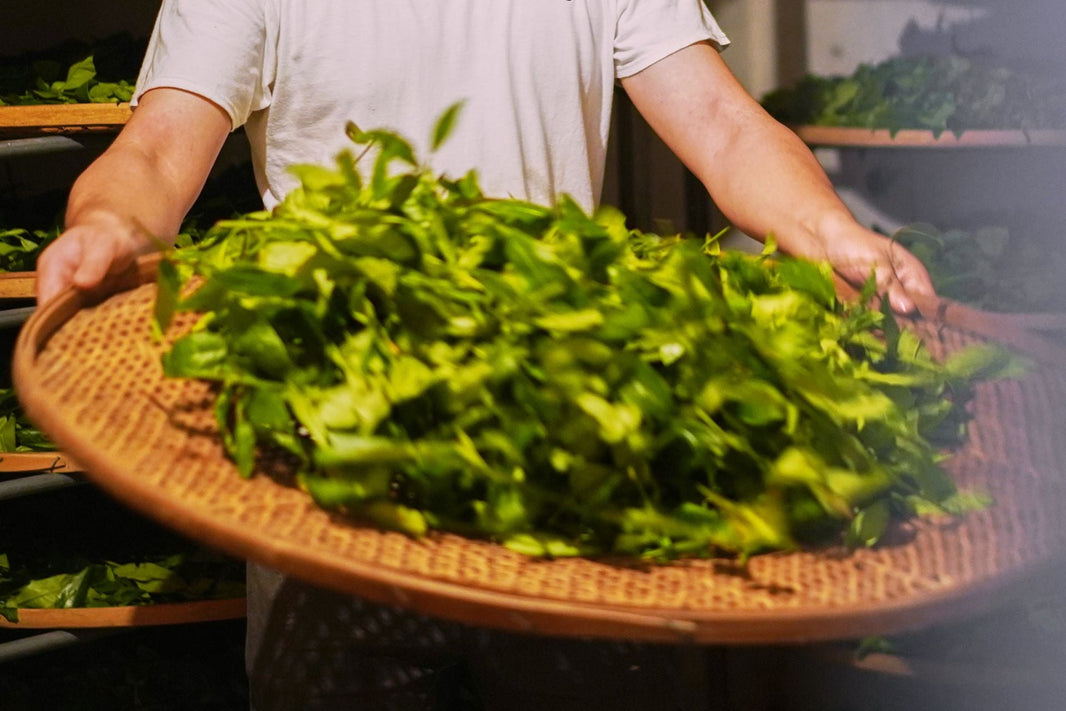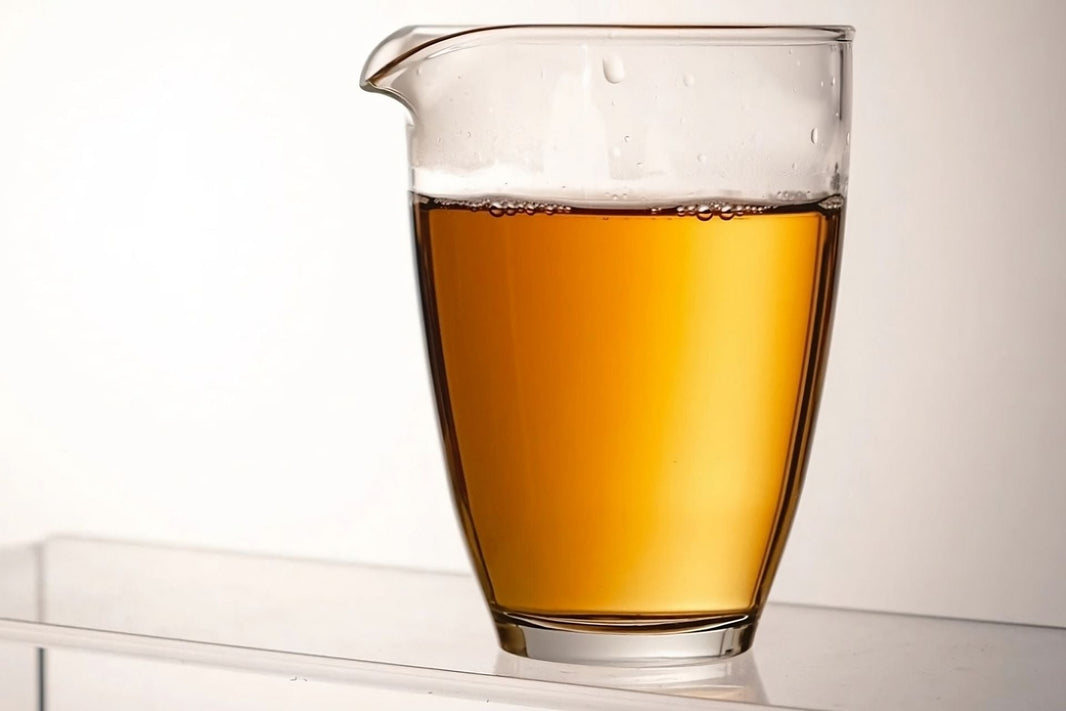You may know that Wuyi rock tea (Yan Cha) has a reputation for being very expensive. Some teas from renowned masters or top tea-growing regions can cost as much as $200 per session (8–10g). But what makes them so special?
This article delves into the unique appeal of Wuyi rock tea through its terroir, varieties, and processing.
What Is Wuyi Rock Tea?
Wuyi rock tea is not a single variety. It encompasses many cultivars.
As long as the tea comes from superior tea tree cultivars grown in the Wuyi Mountain region and is processed using rock tea crafting techniques, it qualifies as Wuyi rock tea.
You might know familiar names like Da Hong Pao and Rou Gui. They are all cultivars of Wuyi rock tea.
Rock tea is a high-aroma oolong tea, but its fragrance is more restrained compared to Tie Guan Yin or Dan Cong. You can often detect its aroma not just in the fragrance but also in the tea liquor itself.
Varieties of Wuyi Rock Tea
Wuyi rock tea features a vast range of tree cultivars. According to a record from the 1980s by the Wuyi Tea Science Institute, over 70 famous cultivars were documented.
To better understand, these cultivars can be categorized as follows:
Qi Zhong (Mixed Varieties)
Qi Zhong, or "Cai Cha" (local mixed varieties), refers to the earliest native tea trees in Wuyi Mountain. Initially, the region had no defined cultivars. These mixed trees were called "Cai Cha."

Tea-making processes taught farmers that some trees produced better teas, with a better aroma and flavor. These trees were propagated asexually, forming the famous cultivars we know today.
Nowadays, you can still find Qi Zhong growing wild by stream or along Wuyi Mountain paths. Some farmers continue to harvest the leaves to make rock tea despite being untended.
Ming Cong (Famous Cultivars)
"Famous Cultivars" refers to superior cultivars selected from Qi Zhong.
These cultivars often have a long history, including the famous "Four Great Cultivars": Tie Luo Han, Ban Tian Yao, Shui Jin Gui, and Bai Ji Guan. Other examples include Su Xin Lan, Qi Lan, Que She, Shi Ru, and more.

In the 1970s and 1980s, tea gardens in Wuyi Mountain were replanted. This led to the widespread cultivation of these cultivars.
Signature Varieties
These include Rou Gui, Shui Xian, and Da Hong Pao.
The Da Hong Pao, also known as Big Red Rope, includes both pure-line cultivars, such as Qi Dan and Bei Dou, and blended versions that combine other rock tea cultivars.
Although there are many cultivars, these signature varieties make up over half of the production of Yan Cha. If you've been to Wuyi Mountain, you'll have seen Rou Gui and Shui Xian everywhere.
Introduced Varieties
These are excellent cultivars from other regions brought to Wuyi Mountain for cultivation. Common examples include Qi Lan, Mei Zhan, Shui Xian, Ba Xian, and Fo Shou.
New Varieties
New varieties result from modern agricultural techniques, including grafting different cultivars.
Many are developed by the Fujian Academy of Agricultural Sciences. They have research codes, like 104 Jin Guan Yin, 220 Jin Mu Dan, 305 Rui Xiang, and 506 Huang Mei Gui.
Growing Environment of Wuyi Rock Tea
The unique appeal of Wuyi rock tea lies in its growing environment.
Years of weathering have formed sandy shale soils. They are breathable and moderately acidic. This makes them ideal for growing rock tea.
Wuyi Mountain has four main tea-growing regions: Zhengyan (True Rock), Banyan (Half Rock), Zhou tea (Riverbank Tea), and Waishan tea (Outer Mountain Tea).
These four categories can be viewed as regional classifications based on Wuyi Mountain's soil conditions, with the soil composition being the main scientific reason behind these differences.
-
Zhengyan (True Rock): Features Danxia landforms. The area mainly has purple sandy shale. The soil is very breathable and rich in potassium and manganese. It also has moderate acidity.
-
Banyan (Half Rock): This area lies between Danxia landforms and a valley. It has thick, red rock soil. It is high in aluminum, low in potassium, and acidic.
-
Zhou tea (Riverbank Tea): This type of soil is found in yellow loam tea fields and river valley plains, with yellow earth as the dominant soil type.
-
Waishan tea (Outer Mountain Tea): It is tea grown in high mountains outside the Wuyi Mountain scenic area.
Originally, these regions were outlined within and around the Wuyi Mountain National Park.
Initially, "Zhengyan" only described the "Three Pits and Two Streams" area. Other regions in and near the park were labeled Banyan and Zhou tea. For instance, tea from the Nine-Bend Stream was once known as Zhou tea.
Local authorities have now broadened the definition to better promote rock tea.
According to the latest definition:
-
Zhengyan (True Rock) tea grows in a 72-square-kilometer area of Wuyi Mountain National Park. This region includes the core Zhengyan areas, such as the Three Pits and Two Streams, as well as the Thirty-Six Peaks and Ninety-Nine Rocks.
-
Banyan, or Half Rock, refers to the tea that comes from the hilly and semi-hilly regions surrounding Wuyi Mountain National Park.
-
Zhou tea (Riverbank Tea) refers to tea grown in plains and fields outside the Wuyi Mountain National Park.
-
Waishan tea (Outer Mountain Tea) refers to rock tea produced outside of Wuyi Mountain, including areas like Jianyang and Jianou.

The high reputation of the Zhengyan region makes its tea very expensive and highly sought after for commercial sales.
Many sellers claim their products are Zhengyan tea. But, there's no regulation. So, consumers must learn to evaluate the quality of rock tea on their own. Otherwise, they might waste a lot of money on counterfeit Zhengyan tea.
You can't tell if tea is from the Zhengyan region or another mountain area just by looking at the packaging unless you trust the vendor.
You can only accurately judge a tea by tasting it personally, and it requires a solid understanding and rich experience to identify the region it comes from.
Furthermore, Rock tea demands careful craftsmanship. Even with an excellent growing region, poor processing can ruin its quality. It becomes ordinary.
In certain Banyan areas outside Wuyi National Park, exceptionally skilled tea masters can still produce tea that closely resembles the quality of Zhengyan tea.
FAQs About Wuyi Rock Tea Regions
Why Are Teas from Pits and Streams(Valleys) Superior?
The pit and stream areas have narrow valleys with steep peaks on either side and small streams often run through the valley floors.
This landscape drains well and has mineral-rich soil. Its varied terrain creates distinct micro-climates. Lush vegetation and ecosystems contribute to the high quality of the tea.

Tea trees are grown in these regions, when combined with careful processing, can produce top-tier rock tea. For instance, a single serving (8–10g) of Rou Gui from Niulankeng can cost up to $200.
How Do Teas from Valleys Differ from Those Grown on Hills?
Tea from valleys grows in areas with diffused light and shorter periods of direct sunlight.
These regions are more humid, making them ideal for shade-loving tea trees. As a result, teas from valleys often have a more subtle, long-lasting, and refined fragrance.
In contrast, teas grown on hills are exposed to longer periods of direct sunlight, which results in a stronger, more assertive flavor profile and a bolder, more pronounced aroma.
Should You Chase After Specific Tea-Growing Regions?
For beginners, chasing after teas from specific regions is not recommended.
Instead, focus on learning to identify the standard flavor profiles of common cultivars and recognizing any flaws in the tea-making process.
Once you have a solid understanding of what these cultivars should taste like, you can begin to explore how teas from different regions vary.
Can You Identify a Tea’s Terroir by Taste Alone?
It’s extremely difficult. Even the most renowned tea masters and tasters in Wuyi Mountain find it challenging to pinpoint the exact origin of a tea by taste alone.
If someone claims they can accurately determine the specific growing region of a tea simply by drinking it, they are either a rare genius or simply bluffing.
Oxidation and Roasting Processes of Wuyi Rock Tea
A high-quality Wuyi rock tea needs a great region and exceptional craftsmanship.
Producing Wuyi rock tea takes a long time.

Tea leaves are usually picked in mid-April, and the first stage of processing is finished by May.
After that, the raw tea, called Maocha, is stored until July, when it gets its first roast.
The tea is then stored for one to two months before it gets a second roast, usually between August and September.
Wuyi rock tea is not usually ready to sell until after October when all the processing is done.
The production of Wuyi rock tea is the most intricate and time-consuming of all types of tea.
The two core processes are oxidation (Zuo Qing) and roasting (Bei Huo).
Oxidation Process of Wuyi Rock Tea
Wuyi rock tea goes through several steps in its initial processing. They are withering, airing, tossing, resting, fixing, rolling, and drying.
Oxidation starts after withering and mainly involves alternating between tossing and resting.

So, what is the purpose of oxidation? It has two main goals: to remove moisture from the tea leaves and to promote oxidation.
How Does Oxidation Work?
During tossing, the leaves rub against one another, causing damage to the edges. This allows oxygen to quickly penetrate the fresh leaves, causing them to oxidize locally. At the same time, moisture from the leaf veins spreads throughout the leaf, revitalizing it.
During the resting phase, the surface moisture evaporates.
Through repeated cycles of tossing and resting, the leaves eventually take on a characteristic "green leaves with red edges" appearance, with the edges turning red due to oxidation.
As you observe the production of Wuyi rock tea during the oxidation process, you'll notice the aroma of the fresh leaves changing - from an initial grassy smell to a refreshing fragrance, then to floral and eventually fruity notes.
Experienced tea makers carefully monitor the leaves' state and aroma changes to determine the optimal point to stop oxidation.
The oxidation process is often a closely guarded secret among skilled tea makers, rarely shared with others.
Once oxidation is done, the tea leaves go into a wok. Here, they are tossed at high temperatures. This step deactivates the enzymes, stopping further oxidation and preserving the tea's aroma. After that, the leaves are rolled and dried.
At this point, the initial processing stage of Wuyi rock tea is complete.
The Roasting Process of Wuyi Rock Tea
After the initial processing stage is completed, the roasting process for Wuyi rock tea usually starts in July. Roasting has a significant impact on the tea's flavor profile.
What Is the Purpose of Roasting Wuyi Rock Tea?
Roasting serves three main purposes:
-
Reduce moisture content: Deactivating enzymes, preventing further fermentation and stabilizing the tea.
-
Remove unwanted odors: Roasting gets rid of off-flavors from the tea leaves.
-
Bring out unique flavors: Roasting creates a range of flavor profiles, adding to the tea's complexity.
The first two purposes are relatively straightforward. After the initial processing, the raw tea (Maocha) is stored for a period.
During this time, it may undergo a “Grassy Reversion” process, where undesirable grassy notes develop.
Roasting removes unwanted flavors and reduces moisture in tea. This ensures stability during storage and transport.
The third purpose of roasting is the most complex. A tea master must evaluate the raw tea's quality. They then decide on the best roasting approach, including temperature and duration.
This process requires skill in tea evaluation. After assessing the raw tea, the master chooses the roasting method. Their goal is to bring out the tea's unique characteristics.
In short, a top-tier tea master blends personal understanding with an aesthetic sense. They create the perfect flavor profile for Wuyi rock tea by determining the right levels of oxidation and roasting.
How Roasting Changes the Flavor of Wuyi Rock Tea
Roasting intensity is typically categorized into three levels:
-
Light roast: Around 100°C (212°F)
-
Medium roast: Around 100–120°C (212–248°F)
-
Medium-high: Around 120–130°C (248–266°F)
-
High roast: Around 140–150°C (284–302°F)
Here a how roasting affects the aroma of rock tea:
|
Tea Aroma |
Floral |
Fruity |
Creamy |
Caramel |
|
Roasting Style |
Light roasted |
Medium roast |
Medium-high roast |
High roast |
|
Roasting Level |
Leaf Color |
Liquor Color |
Aroma |
Taste |
|
Light roasted |
Dark green |
Pale yellow |
Floral, honey-like |
Refreshing, sweet |
|
Medium roast |
Brownish-green |
Bright orange-yellow |
Floral and fruity |
Smooth, balanced |
|
Medium-high roast |
Blackish Green |
Amber or orange-red |
Fruity, caramel, nutty aromas |
Rich, full-bodied |
The quality of the raw material and initial processing greatly affects the range of roasting options tea masters can choose from.
With high-quality raw tea and proper initial processing, you can opt for light, moderate, or heavy roasting to get the flavor you want.
On the other hand, if the raw tea is poor or has initial processing problems, higher roasting temperatures can mask its flaws.
FAQs About Processing in Wuyi Rock Tea
Does Bitterness in Wuyi Rock Tea Mean It's Bad?
Not necessarily. Most Wuyi rock teas with proper oxidation won't have a bitterness. However, a bitter taste doesn't always mean the tea is bad quality.
The key is how quickly the bitterness fades in your mouth. If it lingers for a long time, it might be a sign of issues with the tea's oxidation process.
Is Roasting the Most Important Process in Wuyi Rock Tea?
Many believe roasting is crucial for Wuyi rock tea. In reality, oxidation and roasting are both vital. Oxidation, however, plays the biggest role in the tea's quality and flavor.
Think of it like cooking. The quality of ingredients and preparation often outweigh the final seasoning.
Is the Flavor of Wuyi Rock Tea Determined by Roasting?
The flavor of Wuyi rock tea is mostly set during oxidation. Initial processing establishes the flavor profile. For instance, if Rou Gui tea isn't properly oxidized, even medium roasting won't reveal its floral and fruity notes.
Is More Roasting Always Better?
If you come across Wuyi rock tea roasted eight or nine times, it's wise to avoid it. The roasting process involves both temperature and duration.
Generally, if tea can be roasted in one session, it doesn't need a second. Similarly, if it needs two sessions, a third isn't necessary. Excessive roasting depletes the tea's natural substances, leading to a loss of flavor and quality.
What is “Yan Yun”?
Many believe "Yan Yun" (Rock Rhyme) is simply the mineral taste in Yancha (rock tea). This view is too simplistic. It doesn't capture its true essence.
Let's explore "Yun." In Chinese art and literature, "Yun" represents an abstract concept. It reflects the inner mood and emotional depth of a work. This mood is subtle and profound, leaving a lasting impact.
In rock tea, "Yan Yun" blends aroma and flavor. Here are its key aspects:
-
Aroma persistence: A lasting fragrance in your mouth shows the essence of "Yun."
-
Aroma complexity: The aroma is rich and distinct, with clear transitions between the initial, middle, and aftertaste layers.
-
Intense aftertaste: The tea offers a strong and lasting aftertaste (hui gan), creating a deep sensory experience.
For Yancha to express "Yan Yun," it must meet these criteria:
-
Perfect craftsmanship: The production process must be precise. It should preserve the tea's inherent aroma while adding a unique fragrance through expert techniques.
-
Distinct varietal character: The tea's varietal fragrance must be clear and unique.
-
Exceptional terroir: Only Yancha from top tea-growing areas can show the rich minerality and strong aftertaste that define "Yan Yun."
Thus, "Yan Yun" isn't found in all Yancha. It's a hallmark of top-tier Yancha. Only teas with clear varietal fragrance, craftsmanship-induced aroma, and unique terroir can truly possess "Yan Yun."
Even standard Yancha can be of high quality, even without the complete range of "Yan Yun." When the varietal and craftsmanship aromas are well articulated, they merit appreciation.


